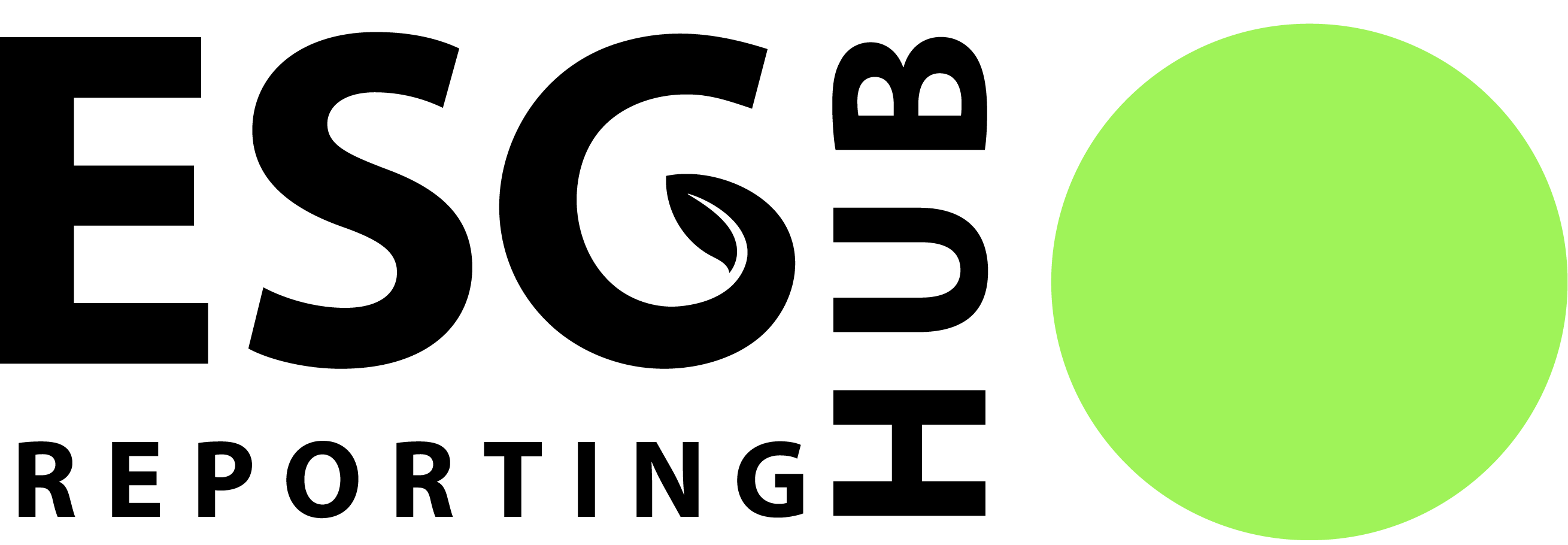Federal Supplier Climate Risk and Resilience Proposed Rule
This article examines the Federal Supplier Climate Risk and Resilience Proposed Rule and how it will affect most companies that do business with the United States Government. Learn about how to determine whether a company is in scope, the disclosures the rule requires, the penalty for noncompliance, and the exemptions that are available.

Introduction
Many companies have been preparing for the SEC’s proposed rule, which would require public companies listed in the United States to report sustainability information. Nevertheless, companies who work with the federal government should also begin preparing for the Federal Supplier Climate Risk and Resilience proposed rule, which will impact companies differently and likely even sooner than the SEC climate rule.
The Federal Acquisition Regulations (FAR) are rules that the Federal government follows when purchasing supplies and services with appropriated funds. The FAR Council, which consists of the Department of Defense, General Services Administration, and NASA, and is led by the Office of Federal Procurement Policy in the Office of Management and Budget, makes changes to these regulations. The council recently issued a proposed rule that would mandate certain suppliers working with the Federal government to report their Scope 1, 2, and 3 emissions, produce an annual climate disclosure, and establish science-based emissions goals.
This rule may seem inconsequential to some, as it only applies to companies that work with the government, but it has a massive scope. According to the proposed rule, the Federal Government, the world’s largest buyer of goods and services, purchased over $650 billion in 2020. Also based on numbers in the proposed rule for companies in scope in 2021, the rule will directly impact 5,766 companies.1 Furthermore, companies that do business with federal suppliers will also be affected because Federal suppliers will need sustainability information from companies in their value chain in order to report Scope 3 emissions.
Covered Suppliers
The proposed rule divides all federal suppliers into three groups when determining their disclosure requirements: major contractors, significant contractors, and other contractors. Major contractors are companies that received over $50 million in annual contracts in the previous year. In 2021, according to the proposed rule, this group included 1,353 companies. These contractors must complete the portions of the CDP climate change questionnaire that align with the Task Force on Climate-Related Financial Disclosures (TCFD) as determined by the CDP. This includes disclosing their Scope 1, 2, and relevant categories of Scope 3 emissions and completing disclosures that outline their climate risk process and any risks identified. Additionally, they must set an emissions reduction target approved by the Science Based Targets Initiative (SBTI).
Significant contractors are companies that received between $7.5 million and $50 million in annual contracts in the previous year. In 2021, according to the proposed rule, this group included 4,413 companies. These contractors have fewer requirements than major contractors. They only need to report their Scope 1 and 2 emissions through the System for Award Management (SAM) website, which the Federal Government uses to track US federal acquisition and contracting activity. (Major contractors must also disclose their emissions through this site in addition to doing so in their annual climate disclosure.) Suppliers with less than $7.5 million in annual contracts for the previous year are not required to submit disclosures.
Timeline
The FAR Council originally proposed the rule in November of 2022. Following this, a comment period was opened for companies and concerned stakeholders to provide feedback on the new regulation. This ran with an extension until February of 2023. The FAR Council will now review the comments received and may choose to adjust the proposed rule before it decides to publish a final rule. It is not immediately clear when this step will occur. According to the Apex Associated Press “The entire rulemaking process generally takes at least two to three years, so given this timeline we are looking at a final rule as early as November 2024.”5
Regardless of when the FAR Council decides to finalize the proposed rule, the first requirement will become enforceable one year after its publication. This requirement is that all major and significant contractors must disclose their Scope 1 and 2 emissions in the SAM system. Then two years after the rule is published, the rest of the requirements for major contractors will apply. These include disclosing Scope 3 emissions, completing the CDP Climate Change Questionnaire, and obtaining SBTI validation of their science-based target.
Reporting Requirements
GHG Emissions
Under the proposed rule, companies that are significant or major contractors must report their Scope 1 and 2 GHG emissions. Scope 1 emissions come from sources that the company directly controls. Scope 2 emissions come from the generation of electricity, heating, cooling, or steam that the company uses but does not control. For more information on the different emission scopes, please read our article Greenhouse Gas (GHG) Emissions.
The rule also specifies that major contractors must report their relevant Scope 3 emissions. Scope 3 emissions include all the emissions related to a company’s value chain, from the procurement of raw materials to the use and disposal of the product by a customer. Since there are 15 different categories of Scope 3 emissions, companies may wonder how to determine which of the categories are considered relevant under the rule for their company. In its accounting podcast, PwC discussed this issue and said until further guidance is given they would assume that companies should report on all of the categories of scope 3 emissions that they actually have. For more information on Scope 3 emissions see our article Scope 3 Emissions.
All emissions will be reported on the government’s SAM website, and major contractors will also be required to include them in their annual climate disclosure.
Annual Climate Disclosure
As previously mentioned, major contractors must publish an annual climate disclosure for their current or previous fiscal year. The disclosure should correspond to TCFD recommendations including reporting Scope 1, 2, and 3 GHG emissions, the entity’s climate risk assessment process, and any identified climate risks.
Major Suppliers must publish these climate-related risk disclosures by completing the CDP Climate Change Questionnaire sections that align with the TCFD. The CDP (formerly the Carbon Disclosure Project) is a non-profit that has created an environmental disclosure framework for the global community. It offers an annual questionnaire that companies can use to disclose environmental information such as GHG emissions. The questionnaire is designed to align with the TCFD recommendations and also enables companies to report their progress towards science-based targets and meet the GHG Protocol Corporate and Reporting Standard requirements if desired. The questionnaire asks for more information than the rule requires, but the rule specifies that suppliers only need to report on the TCFD-aligned sections. CDP’s website has information on which disclosures are aligned. The final report must also be available on a public website, either CDP’s or the company’s own.
Science-Based Targets
The proposed rule also requires major contractors to set a science-based target to reduce their GHG emissions to a level necessary to limit global warming to below 2 degrees Celsius (the Paris Climate Agreement goal). SBTi (a collaboration by CDP, UN Global Compact, World Resources Institute, and the World Wide Fund for Nature) will then need to evaluate the target and determine if it qualifies. However, PwC says that SBTi is only reviewing goals that limit global warming to 1.5 degrees Celsius now, so companies must meet that stricter reduction level to comply with the rule.6 Contractors in scope must validate their targets every 5 years and publish them on a publicly available website. The rule also mandates that contractors monitor their progress toward the goal as part of the annual climate disclosure.
Important Considerations
Contractors should consider two other important factors when preparing for this proposed rule. The first is the issue of non-compliance. The contracting officer will consider a significant or major supplier non-responsible by default if they fail to fulfill the rule's requirements. Contractors deemed non-responsible will be ineligible to receive future contracts. However, the proposed rule lists three exceptions to this presumption: 1) failure to meet requirements was properly beyond their control, 2) the contractor has evidence that they substantially tried to follow the rule, and 3) the contractor has committed to comply as soon as possible (within a year) on a public website.
The second factor is the possibility of waivers. Senior procurement executives in each federal agency can grant waivers to companies to give them up to one extra calendar year to meet these requirements. These waivers will be made available on the agency’s website, so suppliers can check there for more information. Senior executives may also waive disclosure requirements for national security, emergencies, or other mission-essential purposes.
Conclusion
The Federal Supplier Climate Risk and Resilience Proposed rule is not approved yet, but it may be finalized soon, requiring many companies to disclose sustainability information. This will be especially burdensome for contractors who have not yet started to build sustainability reports. Govcon, the Government Contractor’s Network, says that only 10 percent of significant contractors and 31 percent of major contractors report their emissions in SAM currently.7 This means the majority of suppliers in scope are not reporting and may not be ready to do so either. Companies that will be considered significant or major suppliers should prepare now before the rule is final to ensure timely reporting. If they wait until the rule is published, they may find the one-year grace period insufficient to build out the capabilities necessary to report. Check out our article here to learn more about the future of this proposed rule and whether or not most companies will be ready for it.
Resources Consulted
https://viewpoint.pwc.com/dt/us/en/pwc/podcasts/podcasts_US/talkingesgproposedclimatedisc.html
https://www.tcfdhub.org/Downloads/pdfs/E06%20-%20Climate%20related%20risks%20and%20opportunities.pdf
- Federal Register:: Federal Acquisition Regulation: Disclosure of Greenhouse Gas Emissions and Climate-Related Financial Risk
- PwC Viewpoint: GHG and climate risk disclosures proposed for federal contractors
- PwC Viewpoint: GHG and climate risk disclosures proposed for federal contractors
- PwC Viewpoint: GHG and climate risk disclosures proposed for federal contractors
- APEX: Proposed Federal Supplier Climate Risks and Resilience Rule
- PwC Viewpoint: GHG and climate risk disclosures proposed for federal contractors
- Govcon: White House Announces Federal Supplier Climate Risk and Resilience Proposal


